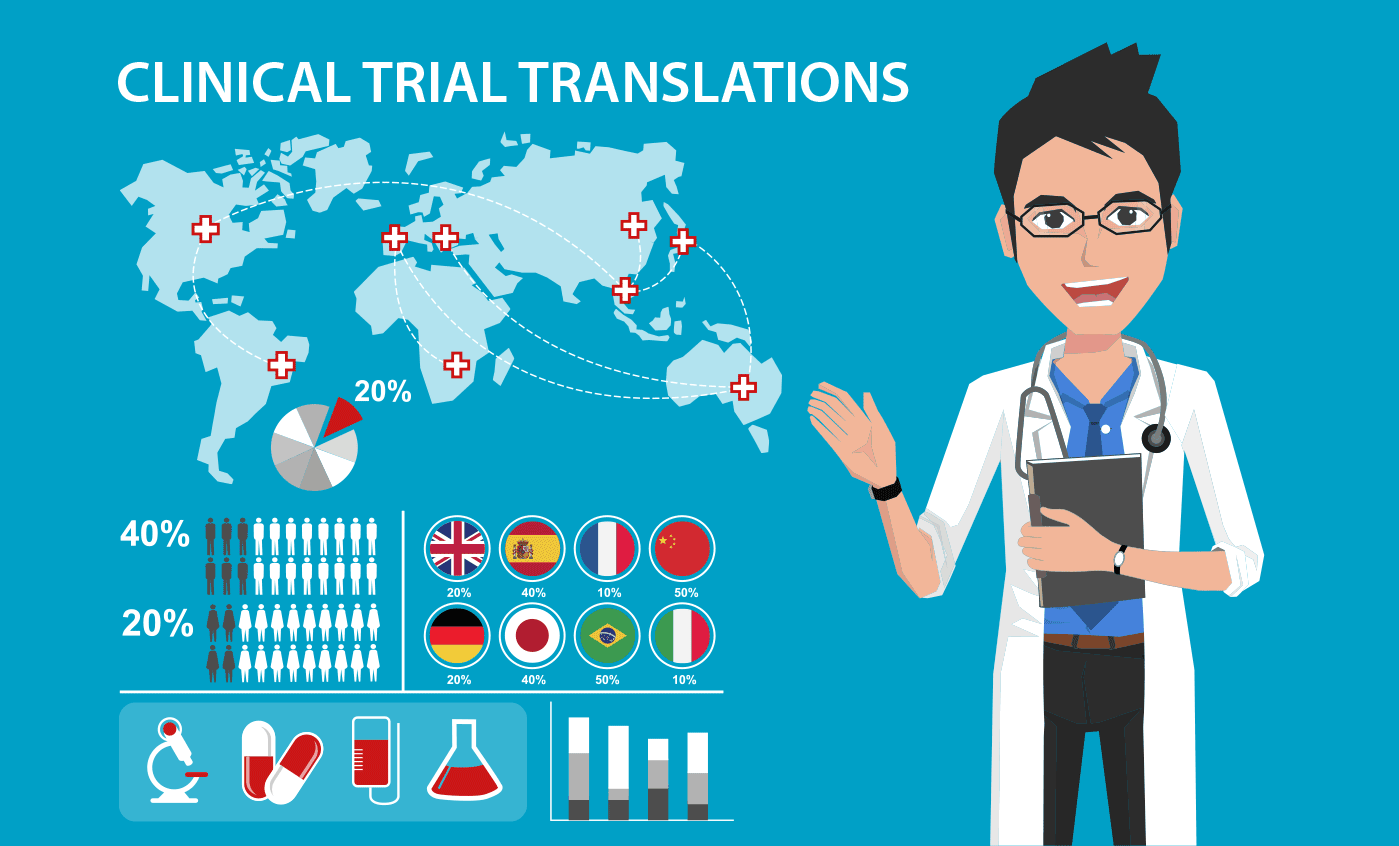Contract Research Organizations (CROs) and the problem of medical translation
- Miley Thomas
- February 22, 2016
- 10,663 views

A contract research organization (CRO) supports biotechnology, medical devices and pharmaceutical companies as an outsourced partner for services including research, development and clinical trials. Many CROs specialize in providing services just for clinical trials. One critical function to a successful clinical trials involves having documents accurately translated in a timely manner.
The CRO industry has been gaining steam over the past few years as the complexity of drug production and development has caused many pharmaceutical companies to outsource the trial testing phase to CROs. In 2011, CROs were used by 27% of large pharmaceutical companies and 47% of small companies. 33 out of the 38 drugs approved that year were drugs tested by CROs. More and more so, CROs are seen as a cost-efficient way to outsource the often messy process of conducting clinical trials.
Clinical trials are by nature global. Countries where trials are conducted have their own set of guidelines, regulatory requirements, and approval processes. For trials submissions to be accepted and approved in global regions, documents like patient informed consent form, investigator brochures and clinical summary reports may have to be translated into the local languages. For example, a company who wishes to market their product in Europe may have to translate into the 23 plus languages of the European Union. This is a large undertaking, and CROs who have been contracted by the Sponsors thus in turn outsource the translations to translation service companies.
Of course, mistakes often appear in medical translations because of the esoteric nature of medical terms (when was the last time you understood what was written in a doctor’s note?). Yet mistakes in clinical trials can have disastrous consequences for all parties involved. A mistranslated symptom description can be misleading to trial participants and result in legal, financial penalties or loss of life. Ambiguity in translating procedural standards and methodology can jeopardize the validity of the trials themselves. The possibilities of things going wrong are many, putting extra pressure on translators working on medical texts.
As a result, several extra checks are in place for contract research organizations that complicate the translation process but also ensure greater translation accuracy. For example, in clinical trial documentation localization, back translation is now part of the process recommended by the institutional review board (IRB) or the ethics committee (EC) in various countries for regulatory approval. Back translation refers to having another translator reverse-translate the translated text back into its source language. The back translation is done without reference to the original text to minimize bias. A reviewer is then brought in to compare the source and the back translated text to identify any mismatches. Although back translation is not always reliable, it’s still one of the better practices out there now for ensuring the accuracy of clinical document translation.
Cognitive debriefing is another process that requires highly specialized translation methodologies to ensure the reliability, conceptual equivalence and content validity involved in translation of PRO (patient-reported outcome) measures. The U.S. Food and Drug Administration defines cognitive debriefing as a qualitative research tool for determining whether concepts and items are understood by patients in the same way that instrument developers intend. Cognitive debriefing interviews involve incorporating follow-up questions in a field test interview to gain a better understanding of how patients interpret the questions asked of them. When it comes to global clinical trials, cognitive debriefing also involves verification of the level of comprehension of a translation by the target audience and to determine if certain translations are deemed inappropriate or confusing by the target population.
Most of the time, translation mistakes cause huge time delays to the clinical trial phase, adding additional expenses to an already expensive development process. Translated documents that come as standalone documents (rather than in translation charts) drastically slow down proofreading and comparing translations directly to the original source text. Inconsistently translated phrases and medical terminology scattered throughout a document, the result of using multiple translators, adds more time to the review process. Taken together, these mistakes all add up to make for long and arduous translation processes and very unhappy CRO clients.
If medical translation doesn’t sound hard enough, translation mistakes may be grammatically correct and still render a document unusable. Doctors employ euphemistic language to talk about unpleasant topics, which of course vary from language to language. For instance, in English, we use “to expire” or “pass away” to talk about death, but how might you translate that into 20+ languages? Translators must make the choice to either substitute in the direct translation for “death” or find an appropriate euphemistic translation of the term depending on context.
Relatedly, translators also need to keep in mind the audience they are translating for. A scientific term for the chickenpox, “varicella” is translated as “varicelle” in French. For an English language document given to a layperson, “chickenpox” would be the more appropriate translation of “varicelle” but not for a doctor. Eponyms, different names for the same thing, are also a huge source of confusion in medical translation. “Infantile Scurvy” can also be called “Barlow’s disease”; “Möller-Barlow disease”; “Barlow’s syndrome” and so on, or the more colloquial “vitamin C deficiency syndrome.” The same challenge applies to drug names, which may have a generic name and a brand name, depending on the country. Even British English and American English have wildly contradictory meanings for common word. As one medical translator notes, “surgery” is a place where you get cut open in the US, but also a doctor’s office or their opening hours in the UK.”
The need for good medical translation is obviously paramount. As people continue to age and research yields more insights into how to treat our various ailments, each of these treatments will need to be tested and approved in each country. Contract research organizations and bio-pharmaceutical companies will in turn need translation experts to handle the language and documents underlying the trial phase. Contract research organizations thus need to be careful in choosing the right translation companies to work with and setting early standards for projects. For translators, developing best practices, terminology lexicons, and cultivating subject matter experts among translators can go a long way for ensuring quality results.











